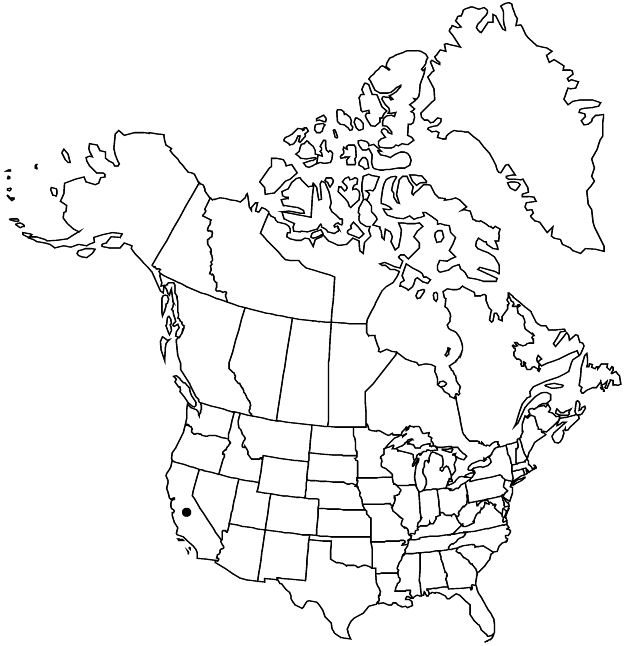Malacothamnus clementinus
Leafl. W. Bot. 6: 127. 1951.
Subshrubs, 0.4–1 m, branches slender, indument white or grayish, sparse to dense, shaggy-tomentose, canescent, hairs mostly stellate, stalked, 10–30-armed. Leaf blades ± round, 3- or 5-lobed, to 5(–8) cm, thin to moderately thick, surfaces: adaxial dark green and glabrate, abaxial soft-tomentose, lobes triangular to rounded, basal sinus not overlapping. Inflorescences short-spicate, flower clusters subsessile, congested; involucellar bractlets filiform to linear, 3–9 × 0.5 mm, 3/4 to exceeding calyx length. Flowers: calyx campanulate, 5–9 mm, lobes coherent, narrowly triangular, 3.5–6.5 × 1.5–2.3 mm, ca. 2 times as long as wide, 2–3 times tube length, apex long-acute to acuminate, densely villous; petals white, fading lavender, 1.5 cm. Mericarps 2–3 mm. 2n = 34.
Phenology: Flowering Mar–May.
Habitat: Coastal sage scrub
Elevation: 100–400 m
Distribution

Calif.
Discussion
Of conservation concern.
Malacothamnus clementinus is known from San Clemente Island and is considered endangered. In leaf characters it is similar to M. fasciculatus; in indument and calyx characters, it approaches M. fremontii. The petals are often not overlapping, a feature rare in Malacothamnus. Malacothamnus clementinus tends to propagate mainly via rhizomes and rarely produces fertile seeds.
Malacothamnus clementinus is in the Center for Plant Conservation’s National Collection of Endangered Plants.
Selected References
None.